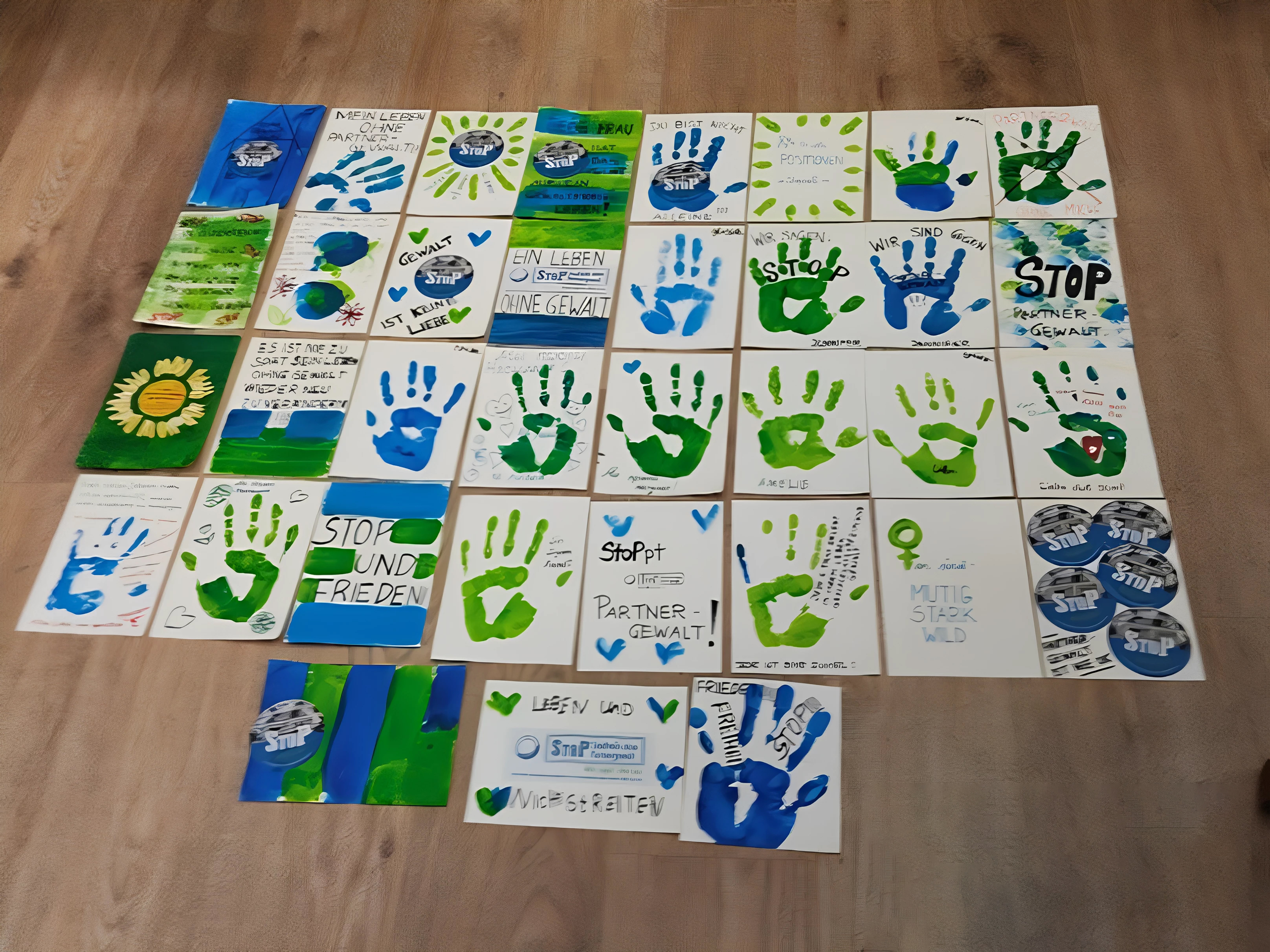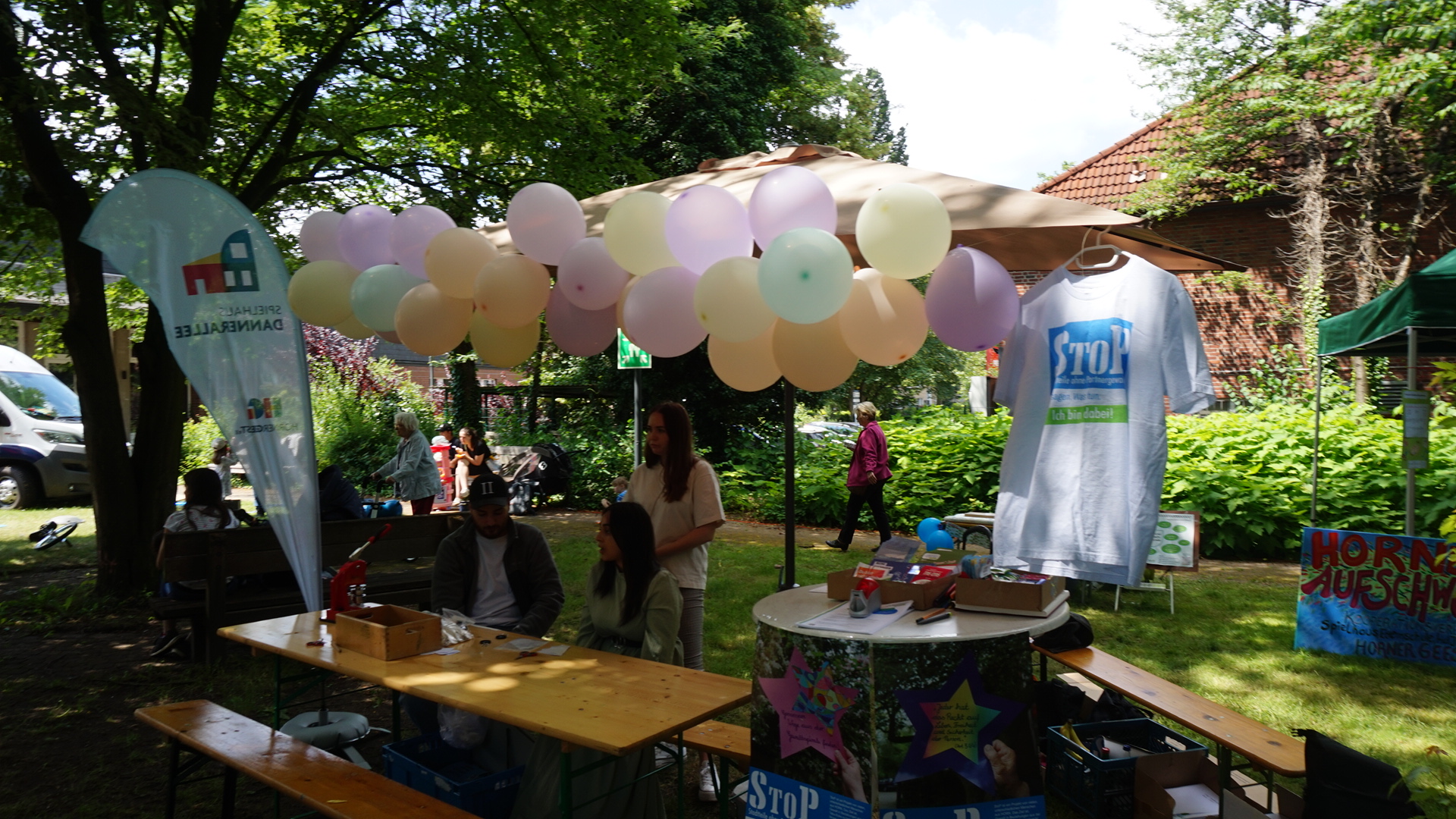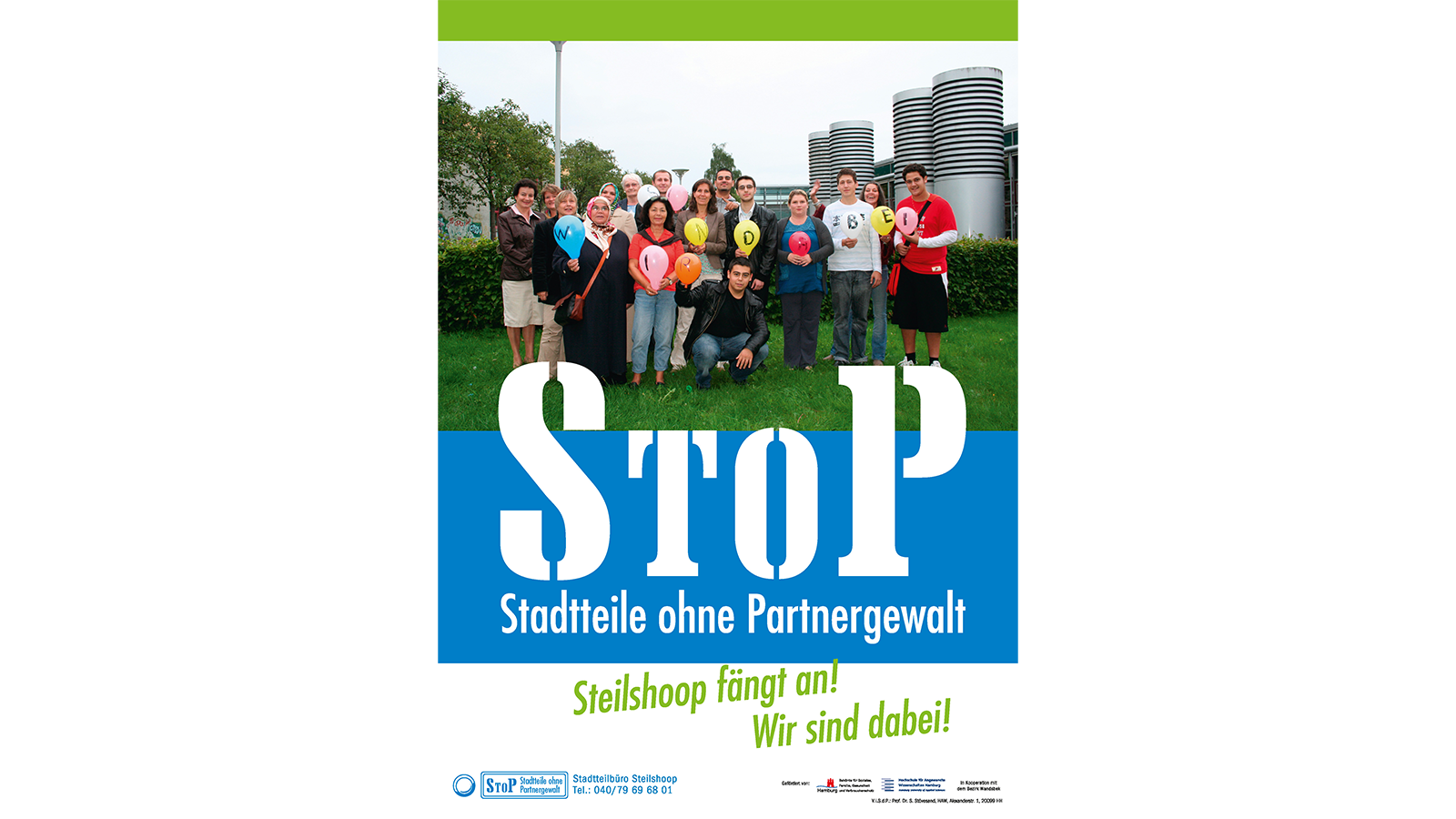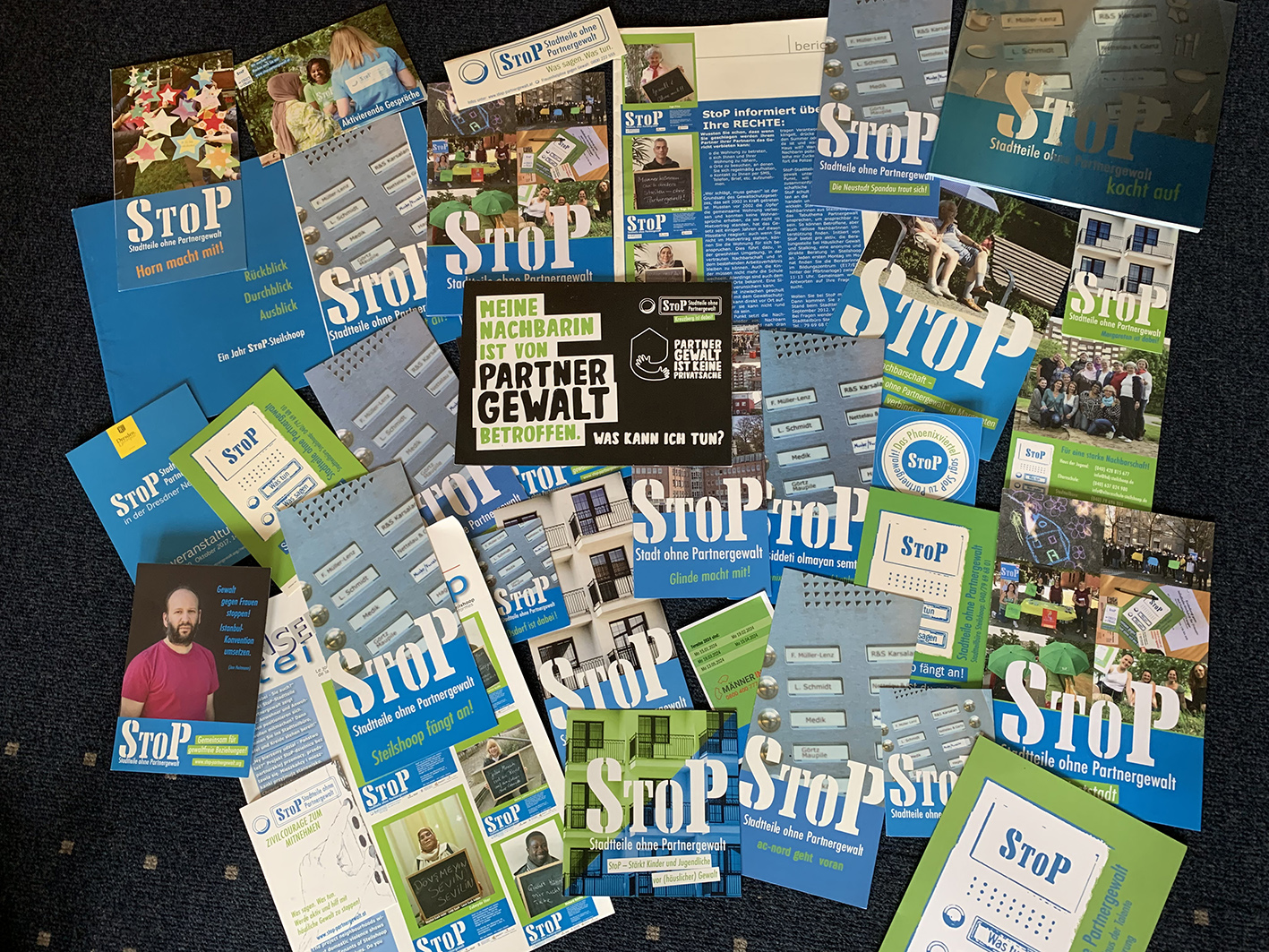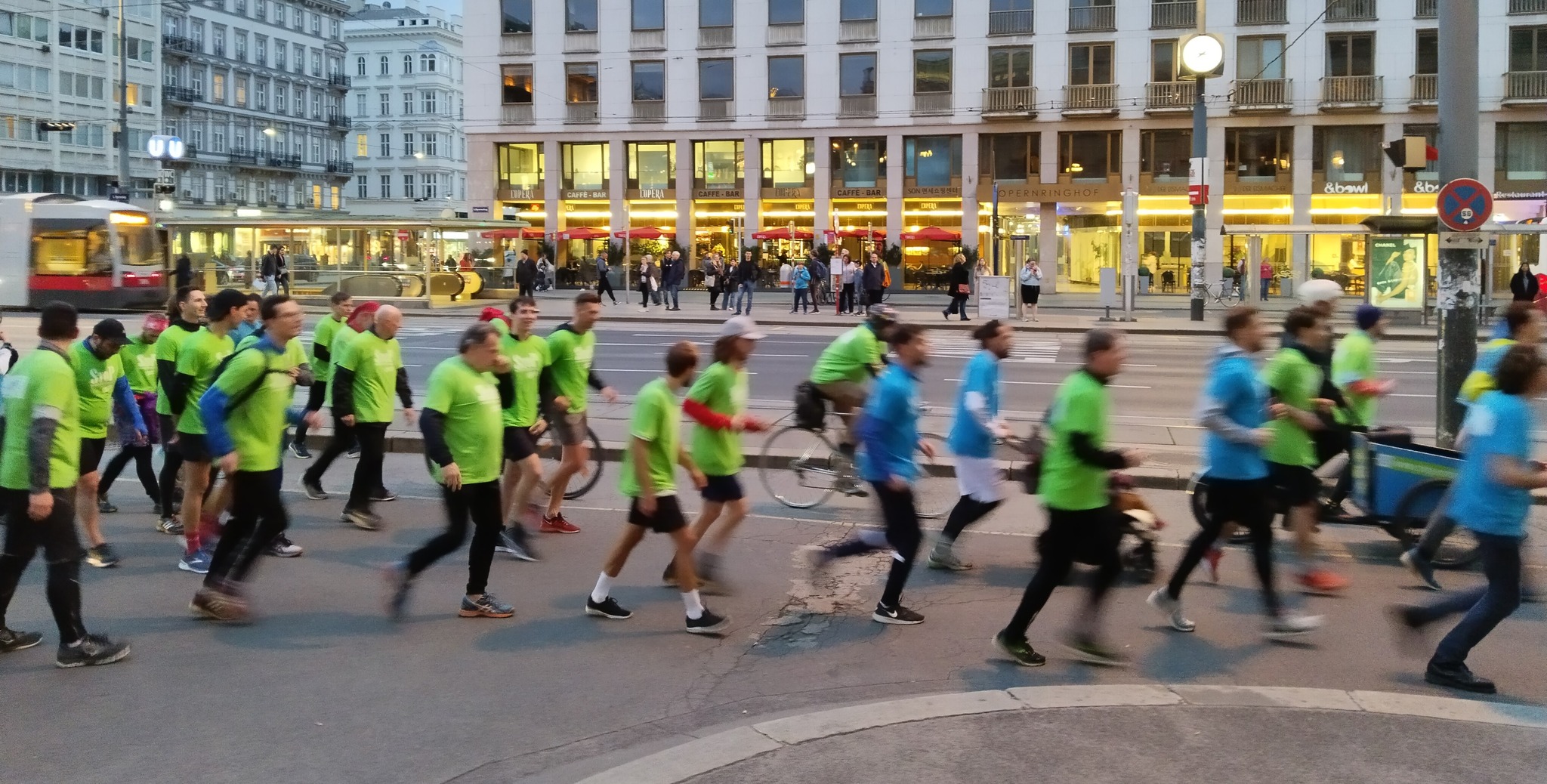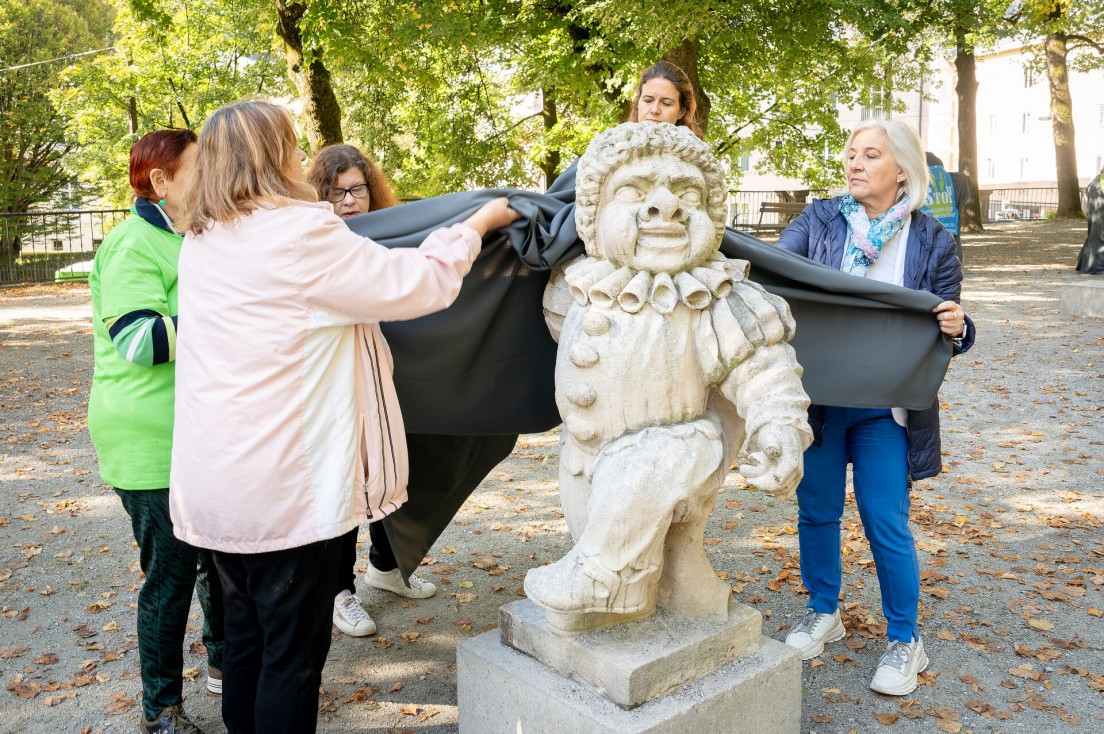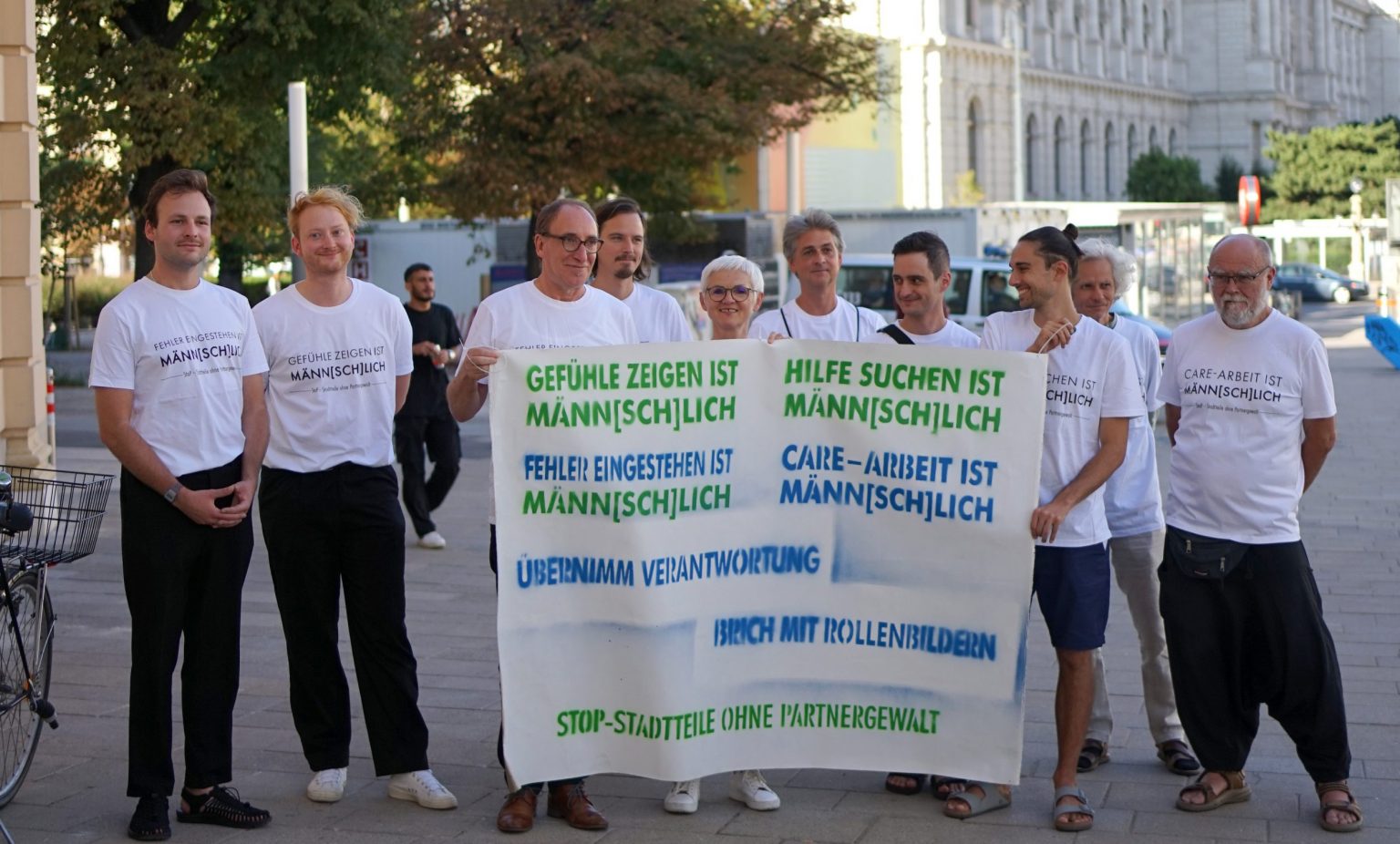The StoP community group, with the help of the StoP organiser, takes action and starts a public discussion about domestic violence in the neighbourhood. They develop community specific outreach materials (local symbols, people, culture…), start campaigns, show up at the shopping centre, playgrounds, parks, local festivals and community meetings. The issue of intimate partner violence is no longer hidden or taboo but ‘mainstream’, which is a key objective of StoP work.
The aim is to involve and organise as many people as possible in an intensive process of relationship building, education, awareness-raising and interventions. Easily accessible events, such as public film screenings or street parties, provide an opportunity for bringing people together in a non-binding way, while StoP theatre, music or craft workshops help to develop more intensive contacts.
An effective and fun way to bring community members together, inspire change and discover ways to make it happen is to use the Future Workshop (Jungk/Müllert 1987) method. Another, especially for neighbours who prefer to do practical things, is to work together to design and build StoP benches for public use. StoP groups in several cities have been very successful in this area.
Broad outreach and mobilisation work with hundreds of door-knocking interviews (see tool step 3) is an essential method in community organising and is part of action research (Bradbury 2015). Door knocking conversations are more random, not as long, intense and personal as one-to-one conversations where you make an appointment in advance. Organisers can also use it in Step 2, but it really takes off in this step because it is participatory. Now the StoP community group activists who have been trained in Step 3 to have these kinds of conversations, can be part of this action.
Through door-knocking and conversations in public spaces, the StoP activists meet new neighbours and become more connected to the neighbourhood. In addition, such one-to-one conversations could identify more neighbours who are natural leaders and act as 'hubs' of local social networks.
The conversations provide insights into residents' attitudes, self-interest (as a basis for mobilising action). In return, StoP-trained neighbours can provide support by answering questions people may have, such as 'What should I do if I suspect violence is taking place in my neighbour's home? As a result of these organising processes, you will learn about people's readiness to participate in further activities, such as attending StoP events, taking on smaller activities or working with StoP on a regular basis. The medium-term strategic goal is to engage at least one resident in each street or large block of flats to act as decentralised StoP contacts and hinges to the StoP community group, e.g. to pass on information in their street, in their building, and to identify themselves as StoP supporters. StoP would offer them workshops to learn how to talk to their neighbours, intervene, protect themselves and protect others.
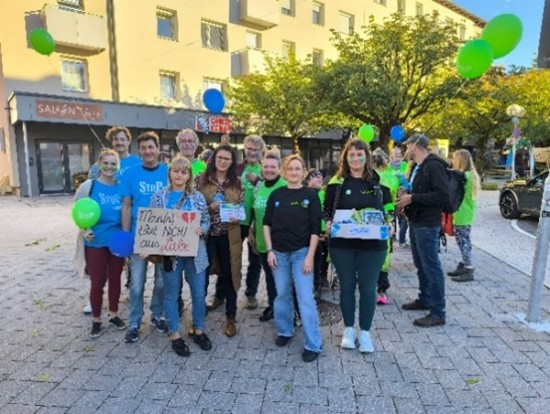
Example
The StoP groups in Steilshoop worked together to produce a poster in which activists and supporters “showed their faces”. Motto: We are here to StoP Domestic Violence. Women from a StoP group in another neighbourhood created a poster with their own beautifully designed personal messages, such as Article 3 of the German Constitution: “Everyone has the right to life, liberty and security of person”.
The activists visited businesses, talking to shop owners, pharmacists, doctors and bank employees, so that the posters hung in many shop windows for weeks and the information was distributed at the same time. The poster led to spontaneous conversations and enquiries in Steilshoop: “Isn't that you on the poster in the shopping centre? What is that, StoP?” More and more informal requests for help began with “You're at StoP...”.
There were also several articles in the local print media, with StoP activist and actions appearing on the front page of the local newspaper several times. Invitations to take part in radio and television programmes were seen not only as publicity but also as recognition and empowerment for the residents involved.
The StoP activists also were very interested in the work of women's shelters, access routes and services. They then organised a public “What happens when” information event in Steilshoop, inviting staff from the women's refuge, the local police station and a helpline to speak, which attracted many residents.
More action: StoP activists accompany neighbours to women's shelters, create local radio programmes on the subject, they report that neighbours are now approaching them, asking for leaflets to pass on, they form a kind of early alert system to protect a victim from a stalker, they use coffee meetings at the bakery or “Tupperware evenings” are to pass on information and give informal advice. StoP group members ring the doorbell when they hear loud arguments or screams – officially to borrow a cell phone cable, for example, but indirectly to interrupt the violence and check on the situation.
Activists in the local StoP projects keep coming up with new things and activities, such as “neighbourhood monologues” accompanied by a painting performance, handing out flowers in the shopping centre and using it as an opportunity to talk, writing cookbooks and inviting neighbours to cook and eat together, also addressing the issue.
The StoP community group enjoyed designing postcards, T-shirts, pens, bags, mugs, emergency cards, cleaning cloths for glasses (so that violence is “clearly visible”), lunch boxes, umbrellas, producing an educational film and leaflets in several languages. One of the StoP activists, who works as a cleaner and had the StoP sticker on her materials trolley, was then approached by a colleague. After her explanation, everyone in the team wanted a sticker and so StoP spread to the workplace. Information stands at neighbourhood festivals provided information through quizzes and raffles. There were always neighbours who did not want to join the group, but took flyers from the stand pass on others. StoP was also present at the Christmas bazaar and the end of Ramadan celebrations. In this way, we achieved our aim of integrating the issue into traditional neighbourhood activities and creating easy accessible opportunities for discussion.
Another important aspect was the presentation of an exhibition, “Heartbeat”, created by staff and residents of a women's shelter, which was shown for two weeks in the school centre and later in the shopping centre. It gave a lot to talk about. The extent and significance of partner violence was well conveyed through the vividness and 'tangibility' of the exhibits. A novelty in the history of the exhibition was that it was not exclusively accompanied by professional social workers, but that StoP activists from the neighbourhood were available to answer questions about the exhibition during the afternoon opening hours and became knowledgeable contacts for their neighbours. This was also an element of empowerment.
Links
-
Campaign video by ROSA addressing neighbours
-
Guidelines: Territorial campaigning to address cyberviolence and stalkerware against women (Project DeStalk)
References
-
Alminde, S., & Warming, H. (2020). Future workshops as a means to democratic, inclusive, and empowering research with children, young people, and others. Qualitative Research, 20(4), 432-448. https://doi.org/10.1177/1468794119863165
-
Bradbury, H. (Ed.). (2015). The SAGE handbook of action research (3rd ed.). SAGE Publications.
-
Jungk, R., & Müllert, K. (1987). Future workshops: How to create desirable futures. Institute for Social Inventions.


